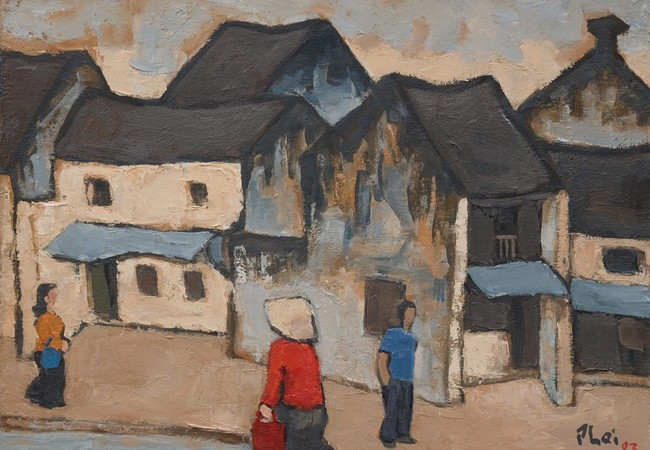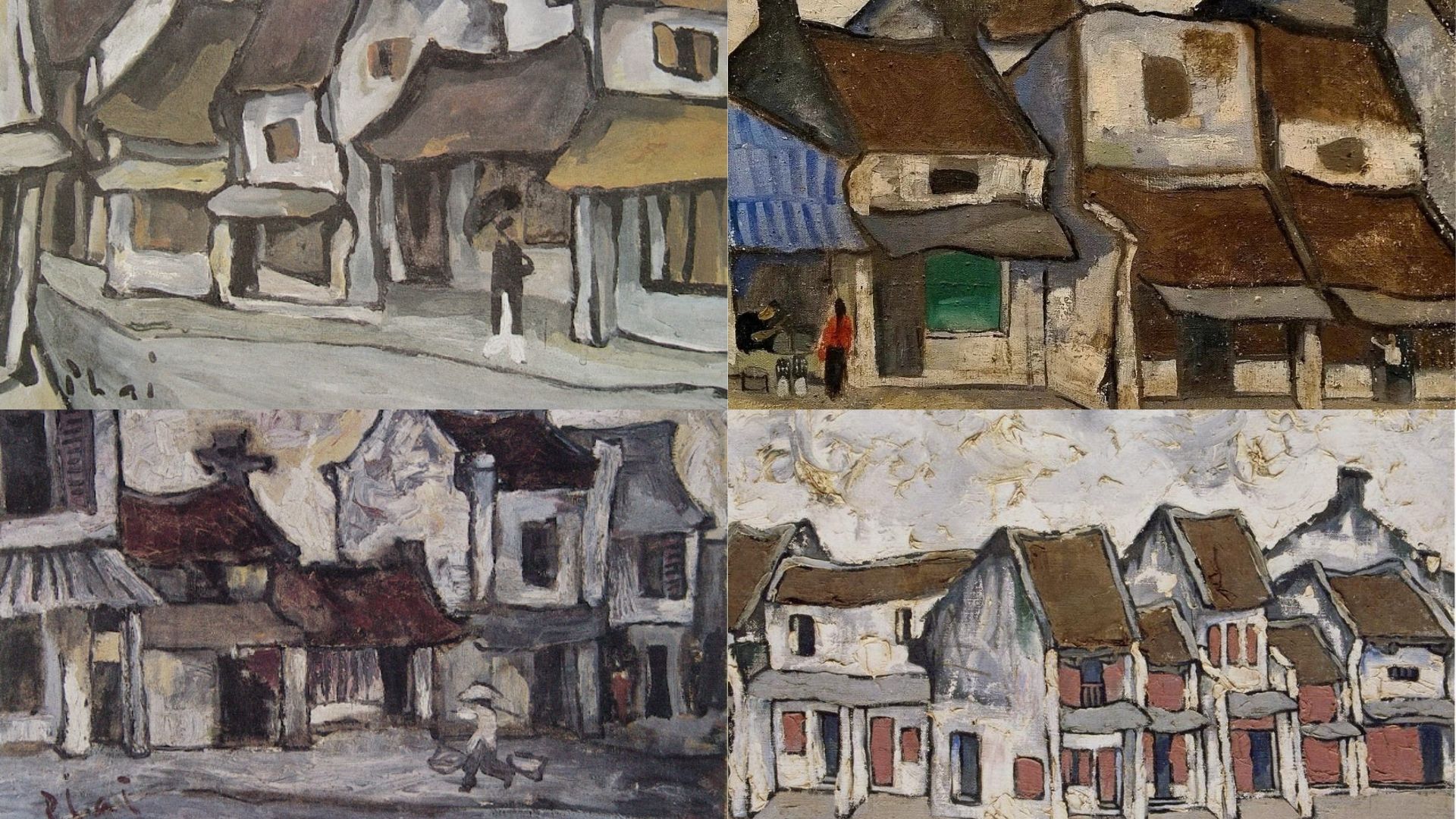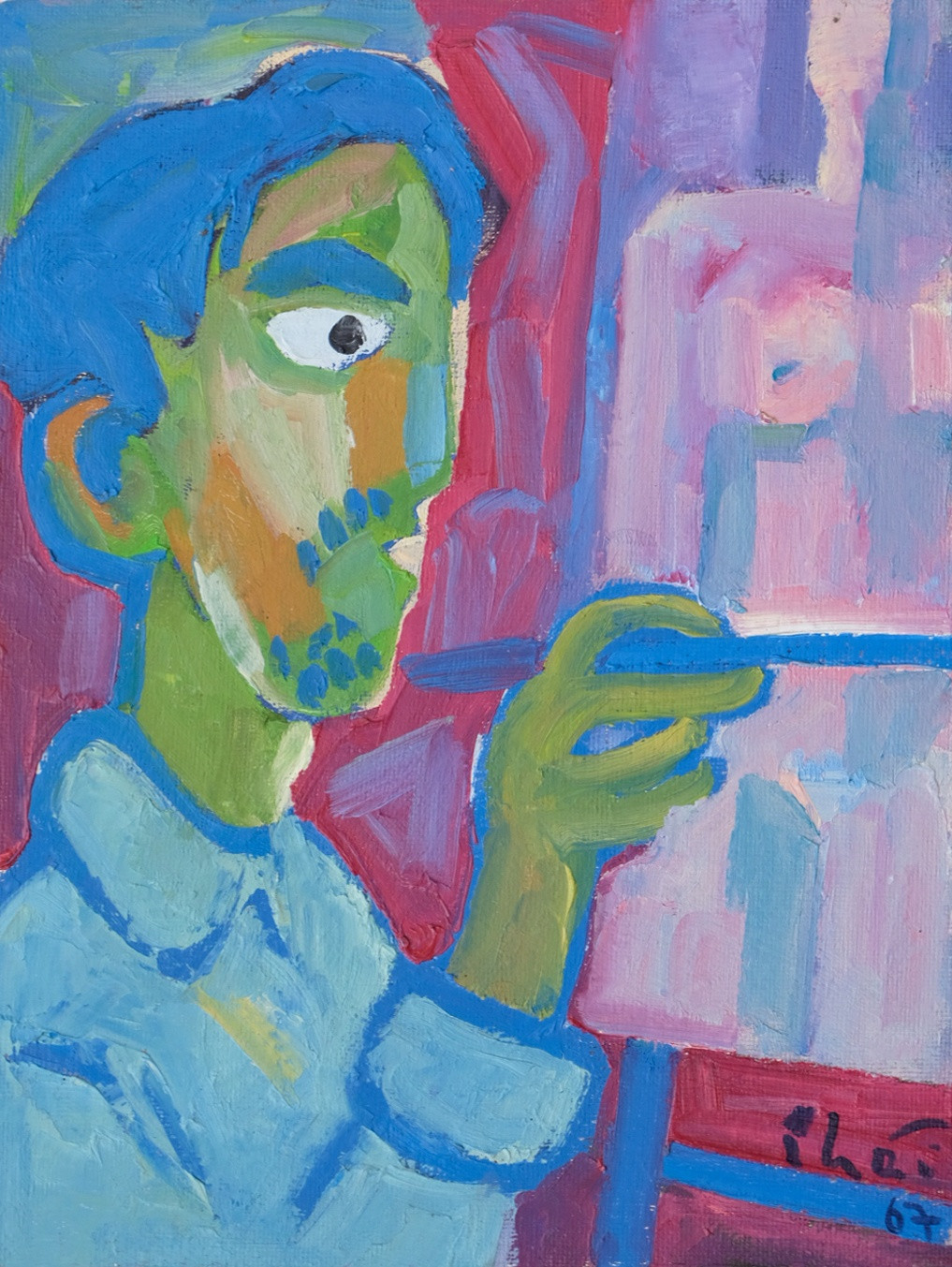Many Hanoians refer to Hanoi as Phố Phái (Phai street)—its imagined thirty-seventh street, existing only in the space between memory and art. The name does not belong to any map, but to Bui Xuan Phai, who spent his life painting the city’s old quarters.
In Bui Xuan Phai’s paintings, Hanoi appears simple yet profound: contained within the frame, but never still. One can almost hear footsteps echoing on the pavement, smell the faint trace of wood smoke, and feel the winter chill clinging to graywashed walls. His work is not just a depiction of the city, but a way of remembering it through emotion, memory, and art.
The artist who breathed Hanoi onto canvas
Born in Kim Hoang village, known for its tradition of folk woodblock prints, and raised on Hang Thiec Street, Phai was among the final graduates of the École des Beaux-Arts de l’Indochine. He remained devoted to oil painting, making the old quarters of Hanoi his lifelong subject.
Phai never painted directly on-site. Each day, he wandered the narrow streets, pausing at familiar corners to observe and absorb, later painting entirely from memory. The result was an image both “familiar and strange”, faithful to the spirit of old Hanoi, yet filtered through imagination and feeling. If photography captures what is visible, Phai’s paintings reveal what endures in the mind: a distilled vision of the city, stripped of noise, leaving only its quiet essence.
His Hang Phen Street (1940) is often regarded as the first of his “Phố Phái” series. From then on, brown-tiled roofs, faded walls, and shuttered windows bathed in afternoon light became the visual language that defined his art. A stillness runs through these works, melancholic yet tender, marked by the resilience of small houses amid the vastness of the city.

Though influenced by the Parisian Impressionists, Phai’s sensibility was deeply Vietnamese: restrained, contemplative, and tinged with nostalgia. He painted Hanoi as one might confide in an old friend, each brushstroke an act of remembrance. Perhaps that is why, decades later, his city still feels alive: intimate yet distant, suspended between the real and the remembered.
The colors of time on old streets
Color palettes in Bui Xuan Phai’s paintings are rarely bright. He favored muted tones such as browns, grays, blues. Shades that steeped in nostalgia for a bygone Hanoi. After 1975, his palette lightened, though a quiet melancholy still lingered. Art historians often divide his oeuvre into three chromatic periods:
- The Brown Period (1960–1970): capturing a Hanoi untouched by renovation.
- The Gray Period (1970–1980): Hanoi begins to change. Men in traditional long robes disappear, ox carts give way to modern life, and architectural details grow more refined.
- The Blue Period (1980–1988): in his final years, the works soften; sunlight filters in, and a red áo dài drifts through the frame—an intimate farewell.

Each painting feels like a slice of time. Through them, one doesn’t just see Hanoi, but senses how it evolves quietly, like breath.
His works also offer a record of the city’s architecture: the narrow, elongated houses shaped by Nguyễn-era taxes based on street frontage; moss-covered roofs, peeling lime walls, and small shuttered windows hiding patient gazes. Inside, light courts and small gardens created a rhythm of openness and air.
One detail appears again and again is the attic. A private refuge in many Hanoi homes, it was where people read, gazed out at the street, or sat alone at dusk. The attic at 87 Thuoc Bac Street was both Phai’s studio and his home. When a 1972 bombing destroyed the roof and damaged much of his work, it left an indelible trace—a reminder of art’s fragility, and of life’s.
The artist of integrity
To speak of Bui Xuan Phai is to speak of more than painting. He lived in hardship, saving every scrap of paper, sometimes sketching on the back of cigarette packs. Yet in his diary—later compiled as Written Under the Oil Lamp—we find an artist’s spirit defined by perseverance and humility.

For Phai, “nothing in excess” was the essence of art: “You may paint for a long time, but only to reach deeper into beauty, not to show the diligence of your hand.” He saw painting as a lifelong apprenticeship: “Paint, to see your own shortcomings. Do not paint to show off, for showing off is ordinary.”
Criticism, to him, was fuel: “It urges the artist to seek more, to understand more, to love more deeply.” Above all, he reflected on the moral duty of the intellectual: “Without respect for talent, there will be no talent… It is these people who will bring honor to the nation.”
There is, in Phai, an integrity and warmth that mirror the truest spirit of Hà Nội.
As art critic Thai Ba Van once wrote:
Hanoi is inherently painterly in its old streets. And, in the truest artistic sense, it was Bui Xuan Phai who discovered this. As a son of Hanoi, he seemed born to belong, to move us with the shapes and colors of this place. ‘Phai’s streets’ are for everyone; he was simply the first to find them. The first and perhaps, even now, the only one.
5AM is Vietnam’s first-ever sunrise music event, co-hosted by Vietnam Airlines, SpaceSpeakers Group, and Vietcetera. After successful editions in Ho Chi Minh City and Da Lat, Season 3 of 5AM arrives in Hanoi - awakening the thousand-year-old capital with music, sports, and culture under the theme Eye-Conic Hanoi.
More than just a music event, 5AM Season 3 kicks off with the 5AM Run, sparking fresh energy and healthy habits, alongside the Heritage Race, a cultural activity designed to inspire young people to explore and fall in love with Vietnam through iconic landmarks across Hanoi.
Limited tickets available. Don’t miss your chance to be part of Hanoi’s most Eye-Conic sunrise - click here to join the experience.
